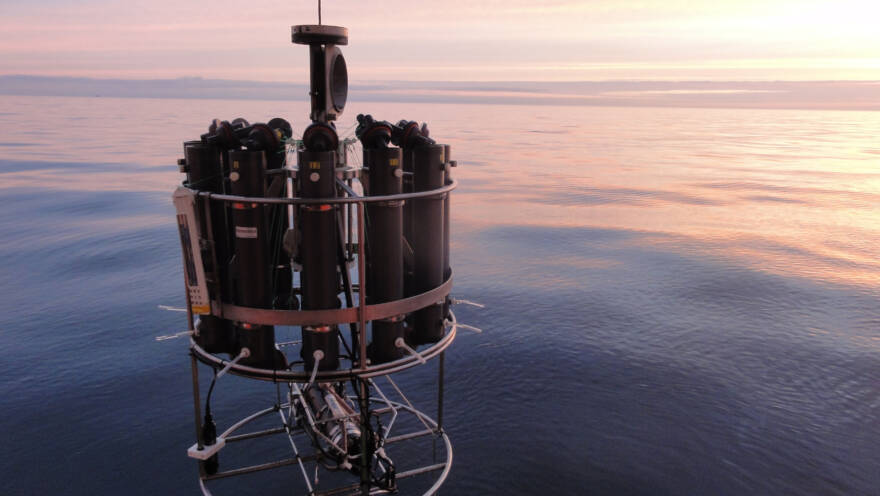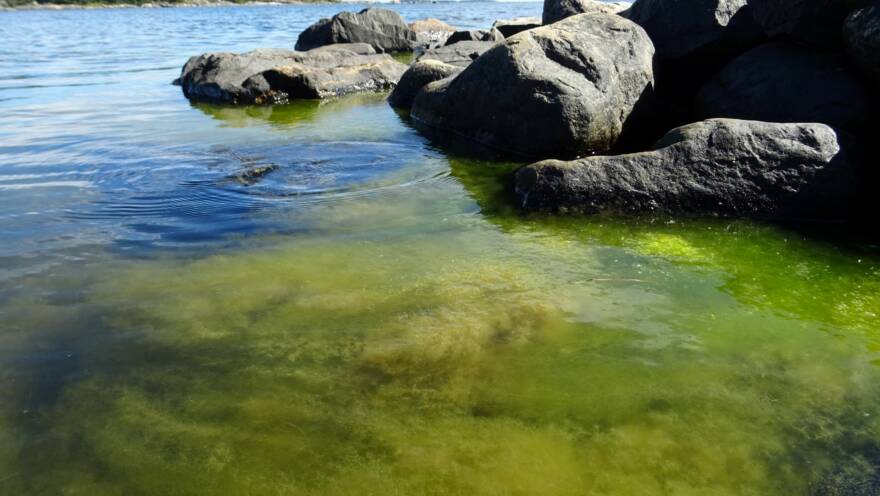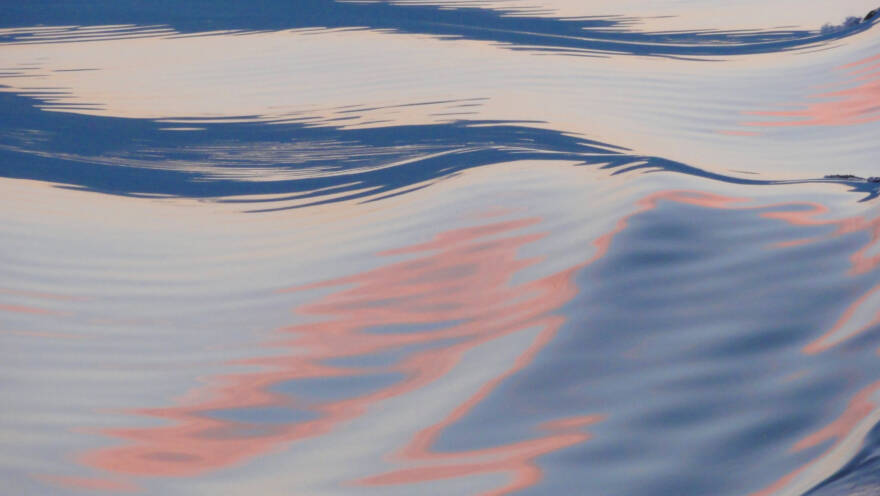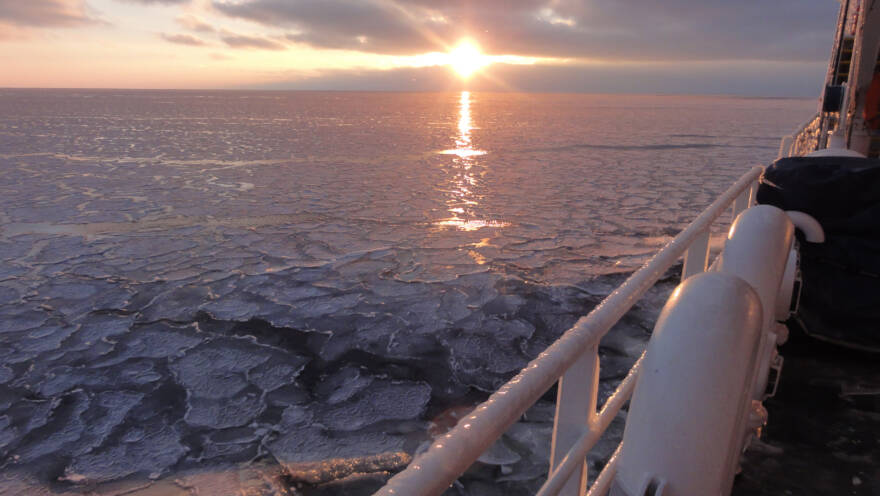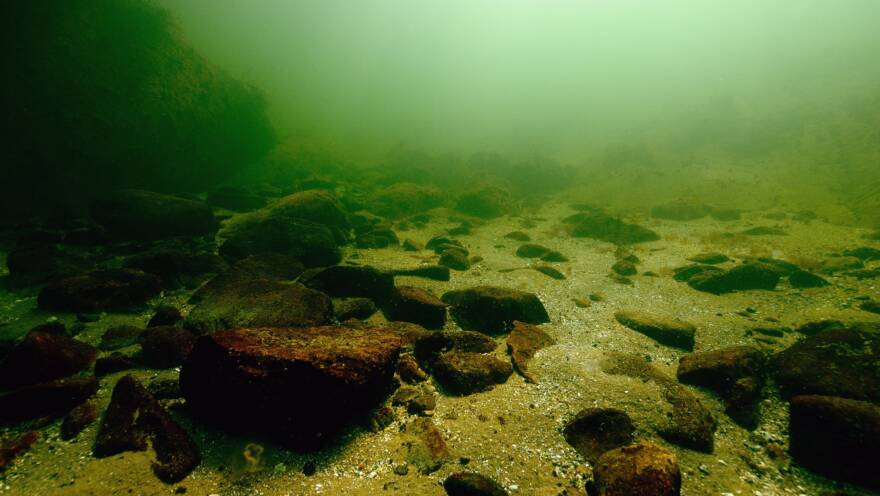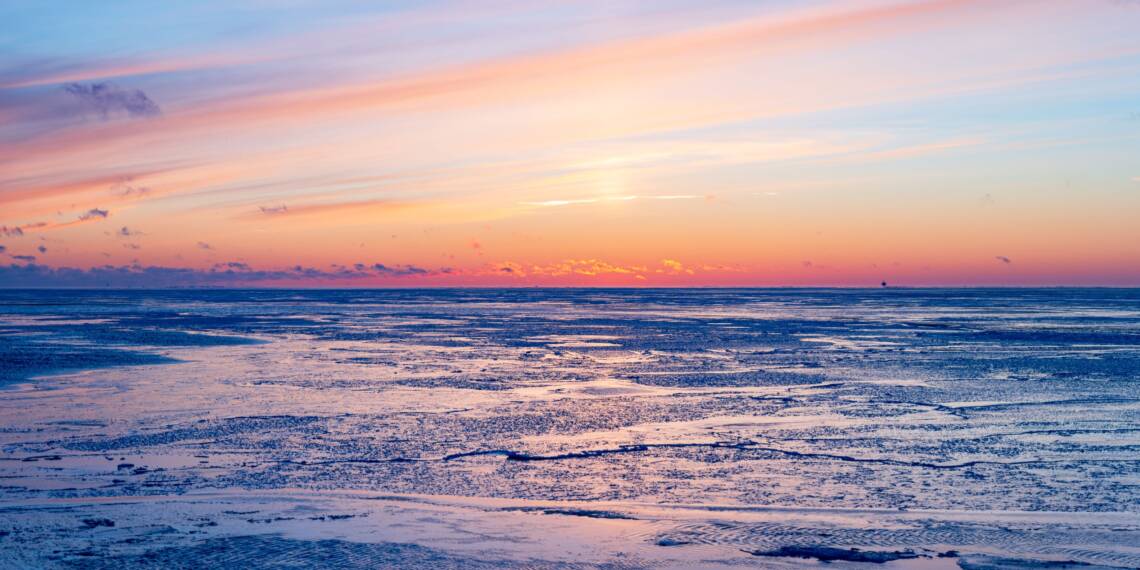
The water of the Baltic Sea is unique
The water of the Baltic Sea has many special characteristics. It is low in salinity, and the surface water temperature varies greatly with the seasons. The water is also permanently stratified. This stratification makes the deep areas of the sea susceptible to oxygen depletion.
The water in the Baltic Sea is low-salinity brackish water. This low salinity is due to the Baltic Sea being very enclosed, with a weak connection to the oceans. A lot of fresh river water flows into the Baltic Sea from the surrounding land areas, but only a limited amount of salty North Sea water enters it.
Weather conditions affect the amount of water entering the sea from different directions. Heavy rainfall increases river flows. The flow of seawater from the Danish straits is influenced by the paths of low-pressure systems, windiness, and wind directions.
In an average year, the Baltic Sea receives about 500 cubic kilometres of fresh river water. The water exchange between the Baltic Sea and the North Sea is about 400 cubic kilometres per year, although the annual variation is very large. Based on these figures, it can be calculated that water stays in the Baltic Sea basin for an average of just over twenty years.
Water stratifies according to salinity and temperature
Saline ocean water and fresh river water only partially mix in the Baltic Sea. Since saline water is heavier, it sinks to the bottom and flows into the deep basins. Above the saline deep water lies significantly less saline water. Between these layers is the so-called halocline, where the salinity of the water increases rapidly with depth.
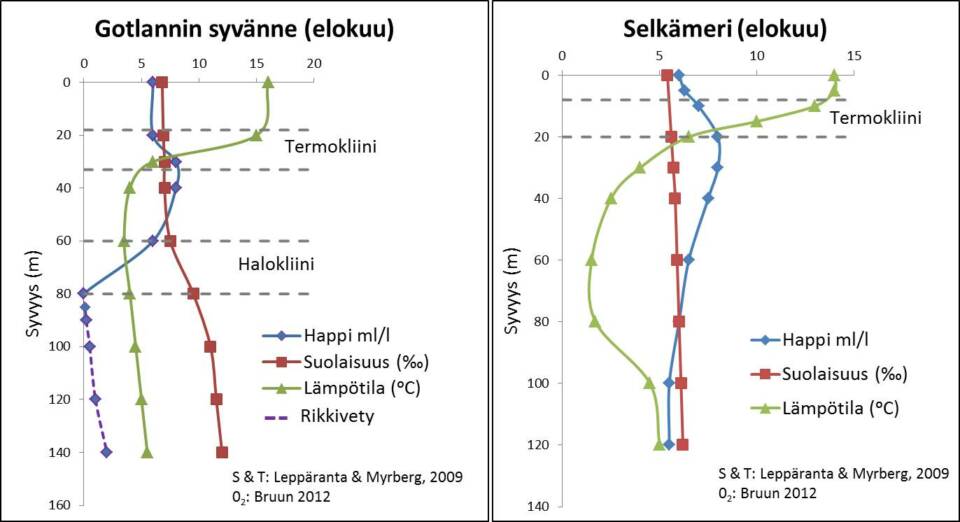
Stratification by salinity is permanent, and even severe storms do not mix the water layers. The deep water remains in place until a new inflow of saline water from the Danish straits flows into the deep basins and forces the old deep water towards shallower areas.
In addition to salinity stratification, water also stratifies in many places according to temperature. In summer, when the air is warm and the sun shines intensely, the surface water warms up. The colder water at greater depths does not rise to the surface because water is heaviest at +4°C. The thermocline, the layer between the warm surface water and the cold deep water, is located closer to the surface than the deeper halocline.
Temperature stratification breaks down in autumn when the surface water cools to around +4°C. At this point, the water layers of different temperatures mix. This phenomenon is called turnover. However, the mixing does not reach the saline deep water.


